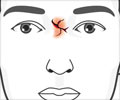A recent research has outlined the enhanced risk of fractures in women suffering type 2 diabetes and using the popular class of oral diabetic drugs.
A recent research has outlined the enhanced risk of fractures in women suffering type 2 diabetes and using the popular class of oral diabetic drugs.
The findings are based on a study, conducted by the research team at Wake Forest University School of Medicine and the University of East Anglia."We knew going into this study that there was an association between thiazolidinediones and fracture risk, however the magnitude of risk had not been evaluated," said Sonal Singh, M.D., M.P.H., an assistant professor of internal medicine and a co-researcher for the study.
"This study shows that these agents double the risk of fractures in women with type 2 diabetes, who are already at higher risk before taking the therapy," she added.
Singh said, if thiazolidinediones (TZDs) are used by elderly, postmenopausal women (around 70 years) with type 2 diabetes for one year, one additional fracture would occur among every 21 women.
Among younger women (around 56 years), use of the drugs for one year or longer would result in one additional fracture for every 55 women.
TZDs are oral medications given to control diabetes by lowering blood sugar. The two currently available drugs in this class are rosiglitazone, marketed as AvandiaTM by GlaxoSmithKline, and pioglitazone, marketed as ActosTM by Takeda Pharmaceuticals.
Advertisement
All of the studies included participants with impaired glucose tolerance and type 2 diabetes, and all compared the risk of fracture among patients with type 2 diabetes who were taking TZD therapy and patients not taking the therapy.
Advertisement
The researchers found that use of TZDs significantly increased the risk of fractures among patients with type 2 diabetes and was associated with changes in bone mineral density at the lumbar spine and the hip.
Data from the studies that reported sex-specific results showed that TZDs significantly increased the risk of fractures among women.
However, they were not associated with the same increase of fracture risk in men. The researchers also found a consistent decline in bone mineral density in women exposed to TZD therapy.
"Women with type 2 diabetes are at an increased risk of nonvertebral fractures, with a near doubling in the risk of hip fractures. Any additional risk from thiazolidinedione therapy could have considerable impact," the researchers said.
The findings appear online on the Web site for the Canadian Medical Association Journal and will appear in the January 6 issue.
Source-ANI
SAV














